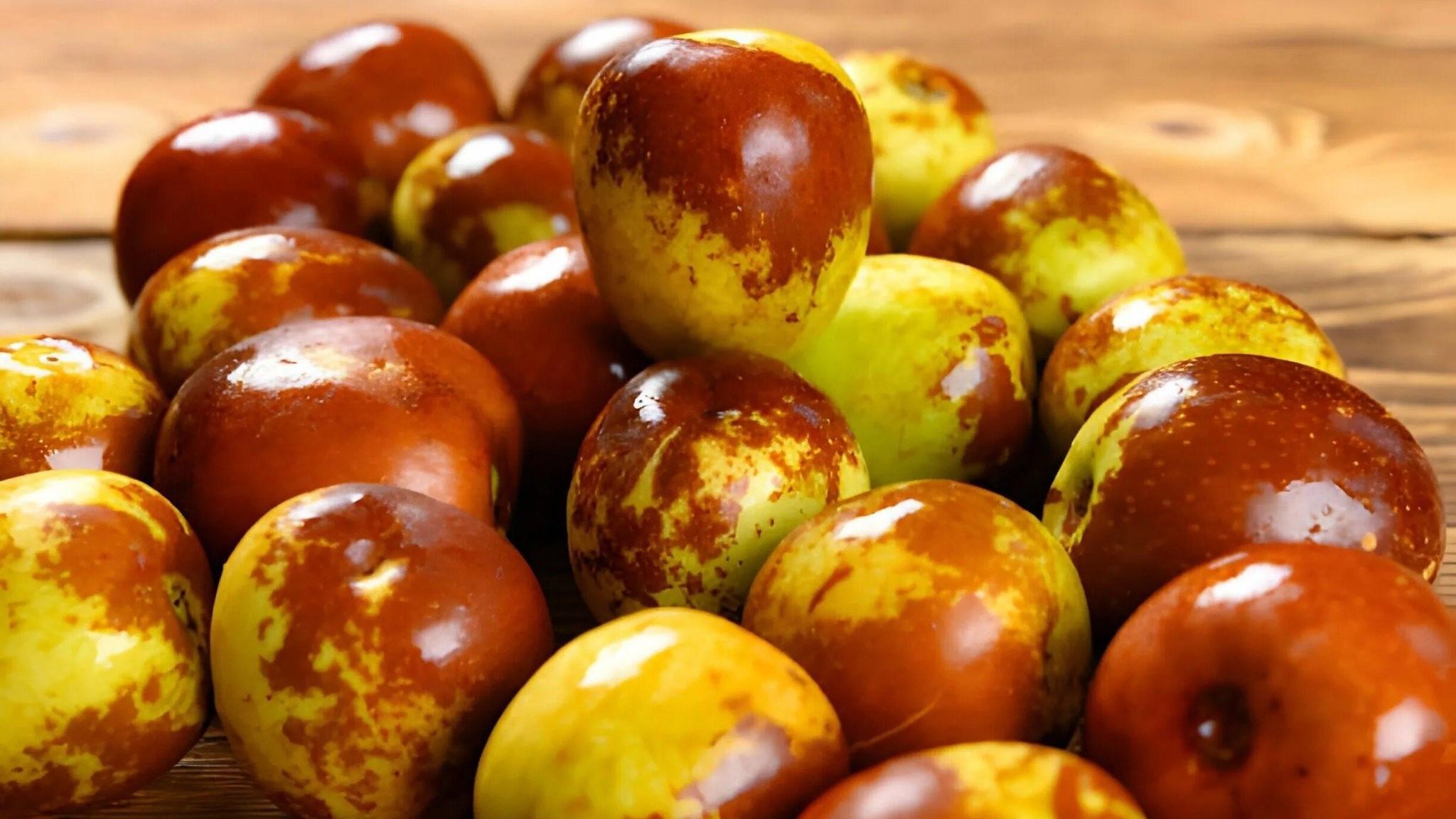Speckled beauty: Jujube

The jujube is a quintessential autumn fruit, appearing suddenly as summer fades and the first hints of fall emerge. Its speckled color deepens as winter approaches. Known as "hünnap" in Turkish, the jujube is a visually striking fruit. At first, it is yellowish green with brown, rust-colored specks. Then, the specks grow, and the entire fruit turns reddish-brown. It can be eaten while still greenish yellow, but some prefer it when it’s more mature and browner. They say it’s at its most flavorful when it's wrinkled and half-dried, when it becomes really sweet. I personally prefer it when it is in an almost unripe state, greenish yellow.
Those who know jujube love it, but it is not a widely known fruit available everywhere; in fact, there are many places where people have never even heard of it. In the past, it was rarely found in weekly markets, but only in pricey greengrocers, sitting in a small crate waiting for customers who recognized its merits. Many people believe jujube is good, especially for the elderly, who have conditions like high blood pressure, cholesterol or diabetes. So many people feel almost obliged to eat jujube every year, sort of a health cure. I remember there is a greengrocer on the corner of the main street in Büyükada, Princes' Island. When the islanders saw it, they knew it was time to return to the city for winter and also felt obliged to buy a small brown bag of jujubes for the grandparents. The jujubes of the past were tiny, like an olive. Now, there are bigger varieties, some are as big as plums or walnuts.
Varied uses of jujube
The jujube is a fruit widespread across a large geographical area. It is particularly popular in China and Korea, spanning from the Mediterranean basin to Japan. Perhaps due to its brown color or its oval olive-like shape, it is referred to as a Chinese date. It is also popular in Iran, where it is known as annap. Its taste is somewhat similar to that of an apple or a firm pear, though it does not resemble either of them exactly. The flesh is crisp when fresh, but it is also dried, resembling a date. In Ottoman period cooking, jujube was used to make a jam. In the Topkapı Palace's Helvahane, the dessert section of the royal kitchen, there were glazed china jars for jujube jam. It was even used in meat dishes, giving a sweet-sour taste to the stew. The recipe given in Şirvânî, the Ottoman period cookbook, describes meatballs stuffed with almonds, stewed in jujube sauce. In Iran, it is one of the dried fruits added to puddings. In Italy, it is made into a marmalade similar to quince marmalade. In Korea, it is drunk as a tea, similar to rosehip tea, and it is a very nice drink, more like a slightly cloudy fruit nectar than a clear tea. Italians also make a particular drink out of jujube, strangely called “Brodo di Giuggiole,” which translates as “Jujube Broth.” It is matured for a few months, just right timing to have it ready by Christmas. Apparently, it is a fermented drink, as the saying in Italian reveals. “Andare in brodo di giuggiole,” means “to be over the moon,” explaining the effects of the concoction.
Some like it, some hate it!
One of the early recordings of jujube is by the English explorer and missionary Sir Richard Francis Burton in the 19th century. He spoke 29 languages, including Arabic. He was commissioned by England to find the source of the Nile River. After failing in this endeavor, he embarked on an adventure to explore the Arabian Peninsula. He introduced himself as Abdullah and mingled with the locals, learning about many aspects of the culture. During his visit to Medina, he tasted jujube for the first time. He found it unlike anything else and did not like it. He thought of it like a bad plum, or a cherry you’ll regret eating, or a fruit that wanted to be an apple but couldn’t. He describes the fruit in his book “Pilgrimage to Al-Madinah and Meccah” as: “Little can be said in favor of the fruit, which has been compared successively by disappointed ‘Lotus‑eaters’ to a bad plum, an unripe cherry and an insipid apple. It is, however, a favorite with the people of Al‑Madīnah, who have reckoned many varieties of the fruit: Hindi [Indian], Baladi [‘native’], Tamri [date‑like] and others.”
Don’t be fooled by Sir Burton, jujube is a lovely fruit. If you are lucky to find it, just munch it out of hand, savoring its strangely familiar yet different taste.












